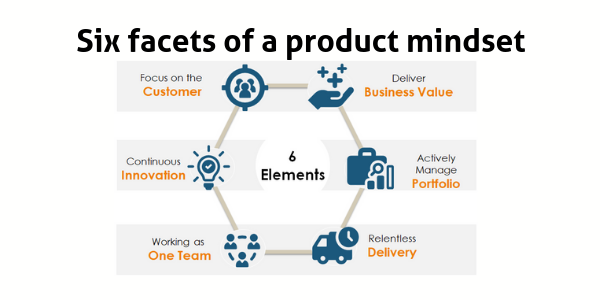Your business has been successful. It’s launched it’s first product and that is reaping rewards. For a technology based business, you probably have a product owner, people developing the product and it’s selling well. You might have been running this business for years and not quite moved from lots of custom builds to a stable of products.
To help you break through this growth trap, it’s time to think Product for fully. You may get push back:
- Sales fear that you won’t be responsive to customer needs if there’s a big gap in requirements to product features
- Marketing may feel they own the product – so it already exists
- Development might believe they are building product … except there is little repeatable resources between clients.
And you’re probably not getting the synergies and benefits you hoped … and that translates to reduced profit, slower development and less agility across customers.
A few years ago, I was the software support manager for a set of products at a banking software company. Well we pretended they were products. Marketing had some great brochures, but every time the development team built something, they realised that they needed changes, so developed the next version with the latest code. It meant our support team covered 10+ customers who thought they had a product, but in reality, they were custom built, and the support team had to manage a whole range of technologies.
How do you change this? By taking a product mindset for the whole team in all departments.

Firstly we have an external view – what does the customer want and what delivers business value. When you then look at the products you have you may well have to refocus on what works.
For one organisation, they had developed a toolset to uncover deep truths in data coming from multiple sources in a business. They had tried to sell this as a toolkit and only when customers had bought it did they understand the flexibility – but they struggled to win sales with the flexibility. So the first decision in delivering business value, was to re-focus the product on solving one major issue for a customer set. No change to the flexible product, except focus development effort on the templates that solve this business problem
The second view, is the management view – having a clear process for managing innovation, i.e. feeding the ideas hopper from sales, customers, and the team and then managing that into the product backlog. The second part is to manage the portfolio of products, i.e. knowing what to develop and what to take to end of life. Too many companies have a long tail of products to support that are too old, and too costly to maintain. Having a clear upgrade or transition path then stops your team being spread too thing.
The last view is the internal delivery view. Firstly acting as one team around the product which means having processes for collaboration, knowledge management, and working together for results (rather than passing the buck). All this comes together with relentless delivery of the product processes – idea creation, development, launch, support and retire. Relentless delivery means having the metrics, governance and the meetings that matter to ensure your targets and promises are met.
What you see with all of these elements are that they are not the sole responsibility of a product director, but rather they need the expertise across the business in marketing, sales, development and the CEO to work together with a product mindset. It means getting the smooth processes in the business around product so that you get the results you need.
Seven Steps to moving to multiple products:
- Understand your current product set (portfolio) – and if you think you only have one product … you may well be surprised at all the sub-products and variations in the business.
- Know the business value you want – both the problem that you’re solving for your customers and the value this product is driving to the business
- Understand your customer needs and trends and match that to the current product and the path to new products you need to develop – are you expanding the offer, shifting geography, creating a new focus, taking it to a new industry etc?
- Implement a clear innovation process to match the customer needs, business value, to the new functionality you will build.
- Prioritise this and create the product roadmap with your product portfolio. This is the key plan to meet the results you are driving.
- Build one team – Communicate this across the business sand ensure each team is signed up to their part in delivering this.
- Make sure you have clear repeatable product processes and governance to deliver to your plan.
THe product director will then track delivery to plan, maturity of the processes (for efficiency and agility), and manage the product portfolio.
